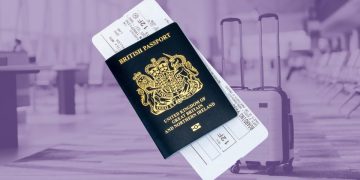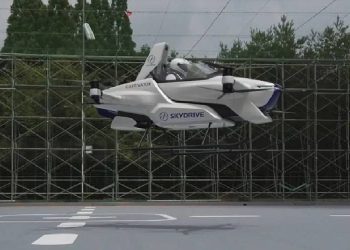Air India flight from Ahmedabad to Gatwick Airport in London, UK on Thursday crashed near Ahmedabad airport. It is considered to be the worst accident connected with a passenger plane in India. The accident was shocking because Boeing’s 787 Dreamliner aircraft counts among the safest planes in the world. Many aviation experts are also surprised by the accident. Then these experts are discussing various prospects. However, the real reason for the plane crash is said to be known after the black box test.
Didn’t the plane reach the right height, was the thrusters not working?
Pilots in the cockpit gave a call after the plane flew. According to India’s aviation regulator – DGCA, there was no further response from the plane after this Made call. It is not clear why the Made call was given. Meanwhile, Ramesh Biswas Kumar, the only person who survived the accident, has said that the plane was facing difficulty in reaching the height. During this time he heard a huge explosion.
After the takeoff, the aircraft reached a height of 625 feet, or 190 meters. After this it was constantly falling down and then fell between the trees and the buildings. The plane was then found to turn into a fireplace. According to aviation experts, the plane’s takeoff was successful but it could not get higher height after takeoff. Some preliminary reports of this say that the plane could not produce the required thrust after takeoff and failed, causing a crash.
What crashed due to the failure of the aircraft engine?
Because the aircraft managed to reach a height of 190 meters and then started to fall, the question is whether there was a problem with both engines of the aircraft. However, according to aviation experts, both aircraft engines may be the cause of the aircraft crash. However, after reaching a height of 625 feet in the air, the engine ‘closing’ is the first such event for Boeing. In fact, two aircraft engines are different independent units. In such a case, if one engine has a technical problem, the other can easily handle the load of the aircraft and land safely.
According to Richard Koran, Professor of Sustainable Aviation at the University of London, both engines are very likely to get worse together. Because if the engine indicates low power, the pilots realize it and they can take the necessary steps at the time of takeoff. However, according to York University Professor John McDermid, the problem immediately came to an end after the plane flew and it is possible that the problem was so serious that the accident could not be avoided. Something similar was also said by Airport Engineer Ahmed Busaina. He said that if a plane is at a height of 10,000 or 20,000 feet and then an engine gets worse, there will be no major problem with flying. But if an engine stops working during or immediately after getting a height, it becomes difficult for pilots to handle a sudden reduction in the thrust.
Was the accident caused by the weather conditions?
There is also speculation that Gujarat’s weather may somehow be responsible for the incident. Temperatures in Ahmedabad in Ahmedabad are approaching 40 degrees Celsius. In such a case, it is suspected that the aircraft’s engine had stopped working due to overheating.
In this regard, Paul Williams, a professor at Reading University, told the British media organization ‘The Independent’ that it was easy to fly with such weather. He said, “June 12 (Thursday) was a dry and thunderstorm day in Ahmedabad. The temperature was also close to 40 degrees Celsius, with no visibility problem. Besides, there was a light wind coming from the west. This weather planes are excellent for flying.” He said there was no problem with turbulance in this clean weather because the wind is very light that easily passes the engine turbine. It is worth noting that the aircraft’s engine itself can withstand heat up to 2000 degrees Celsius because the temperature is already too high due to fuel.
Did not stop the landing gear cause an accident?
Many experts associated with the aviation industry raised the question of why the landing gears were kept down when the plane was over 600 feet high. Landing gear is raised as soon as the aircraft flight. Since landing gears are below, it is possible that the engine defects have already been found.
American Aerospace Safety Consultant Anthony Brickhouse expressed similar concerns and said that the status of landing gear was unusual for that phase of the flight. Pointing to the defect, he said that if you do not know what is happening, you will bring the aircraft back to the runway. In such a situation the landing gear will be kept down.
But Ahmed Busina, a professor at Northeast University in Boston, Massachusetts, USA, has a different opinion on this principle. The aircraft engineer Busnaina said that the landing gear (air wheels) in the passenger planes usually fold when the aircraft reaches about 1000 feet or more. In such a situation not to fold the landing gear should not be the cause of any accident.
Did this accident occur due to a problem related to a fuel?
A senior pilot, who had blown up the 737-8 version of Boeing, told the British media group BBC that sometimes the engine failure could be the cause of the engine failure to worsen or frozen and become oily. The aircraft engine runs on a specific fuel metering system. If this system is blocked, the appropriate amount of fuel will not reach the engine and the engine will be closed.
Did the accident occur due to a bird collision with a plane?
Many experts have expressed suspicion that a bird collided with a plane can also cause an accident. Often, if the birds are directly hit by the aircraft engine, they threaten the aircraft as their full power can be closed as well. The plane in South Korea in 2024 was due to a collision with a tragedy. Of these, 179 people lost their lives.
The incident of birds colliding with aircraft at Ahmedabad airport has also been very important. In December 2023, the Civil Aviation Minister provided data in Parliament that 462 incidents of bird collision were reported at Ahmedabad Airport in five years, which is the highest for any airport in the country.
Pilots and experts, however, agree that if the bird’s collision is not too serious, the chances of crashing are also very low. According to Professor Kuren, “pilots who were flying these aircraft were very trained, they are trained to face events like birds after every 60 to 100 hours of training. So they knew well how to deal with these problems.” There have been many incidents of collision with birds where pilots land an emergency landing after the plane is brought to the proper position.
What was due to the accident or due to the flap of the aircraft?
Based on the video of Air India’s plane crash, the problem with the experts is most focused on the flaps of the aircraft, ie ‘wings’ on both sides. The BBC has quoted three experts as claiming that the Boeing 787-8 Dreamliner’s flaps were not fully opened/expanded after takeoff. These flaps are very important for the takeoff of any passenger plane as they help to fly the aircraft at a low speed. According to experts, if these flaps are not open properly, any aircraft, which are full of passengers, their luggage and fuel, have difficulty maintaining its lift after takeoff.
One pilot also raised the question of not opening the flaps completely and said that at 40 degrees Celsius temperatures of Ahmedabad, the wings should be opened more to maintain its lift after takeoff. In addition, more power-thrust of the engine is also required. A major accident can occur if any of these preparations are lacking.
Some experts have also raised questions on this principle. They argue that Boeing’s 787 aircraft has a warning system for flaps that warns pilots about folded wings before takeoff. This flight also warns the crew. Former pilot Marco Chan said it was not confirmed whether the flaps were completely opened in the video but it was very strange if they were not completely opened. Usually this related investigation is performed before flying the plane so there should be no mechanical problem behind their opening problem. If the flaps are not open properly it can be a pilot’s error.

































